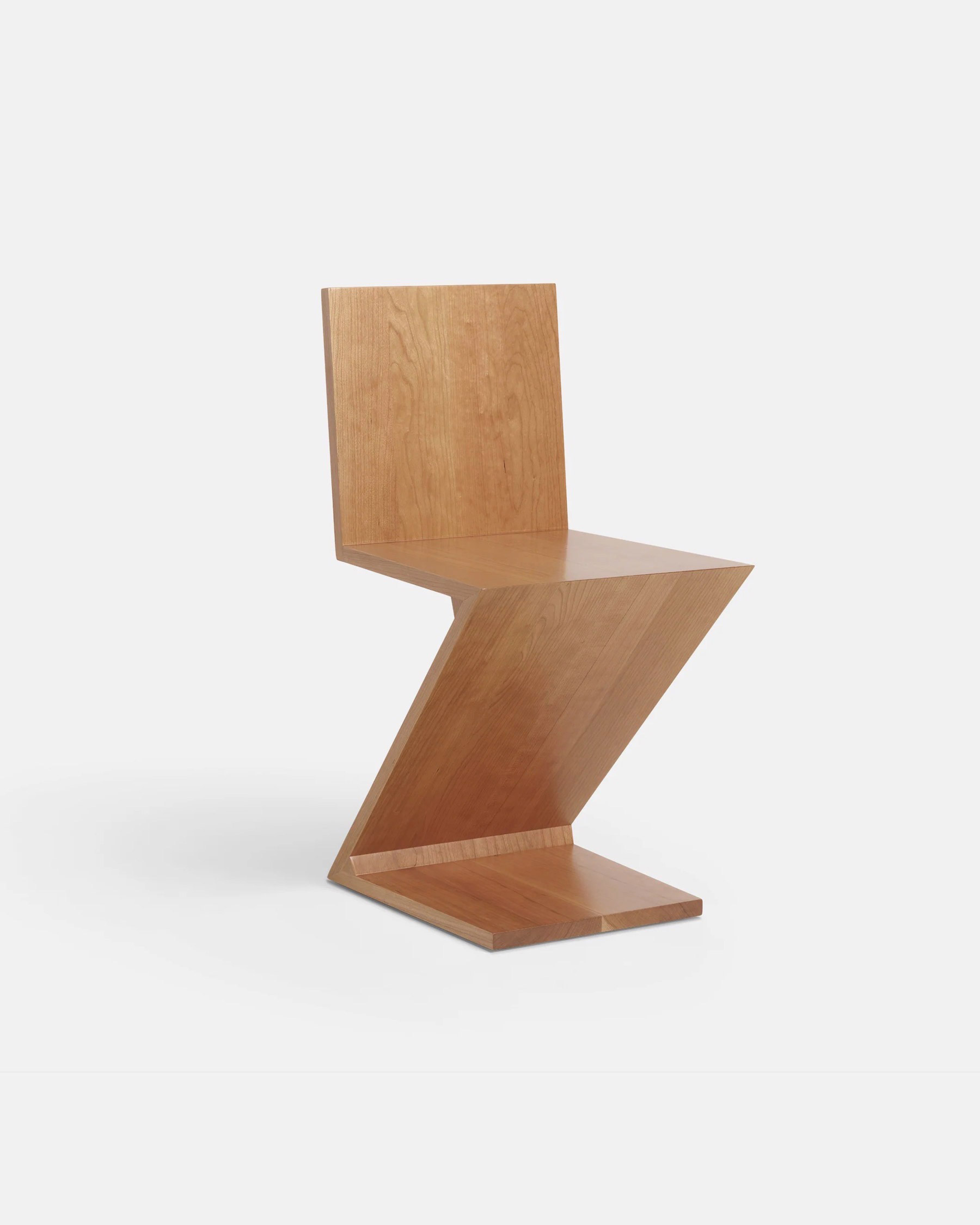How far can the design of such a functional piece of furniture as a chair be reduced and still be aesthetically pleasing? Designer Gerrit Rietveld must also have asked himself this question in 1932 when he designed the Zig Zag Chair. He certainly had no idea that this piece of furniture would become a classic of the design scene.
Rietveld, born in 1888, is still considered one of the great innovators in the world of furniture design. Designed in 1932, the Zig Zag Chair was a revolutionary innovation in the field of chair design and has since become a coveted design icon. “It is not a chair but a designer’s joke,” said Rietveld himself about the chair.
He designed the chair during an uncertain period. The De Stijl movement had already been disbanding for several years, partly due to differences of opinion. By 1931, the movement had largely ceased to exist. Amid labor restrictions in Europe at the time, the Dutch department store Metz & Co. commissioned Rietveld to design a chair for mass production.
He was inspired by the Dutchman Theo van Doesburg, the co-founder of the De Stijl movement. Van Doesburg believed that “oblique” lines would resolve the tension between the vertical and horizontal elements of a design. A philosophy that Rietveld implemented in this chair.
It is not a chair but a designer’s joke.
Gerrit Rietveld about the Zig Zag Chair


The chair consists of four rectangular wooden planes that are connected in a rhythmic sequence and visually create a Z-shape. Two triangular blocks reinforce the seat and base. The conceptual and visionary design of the Zig Zag Chair also alludes to the cantilever chairs by Ludwig Mies van der Rohe and Marcel Breuer, but – in contrast to the metal frames of their designs – uses wood as the only material.
What is fascinating about this chair is its apparent instability. On closer inspection, however, the chair reveals its clever dovetail joints and surprises with its extreme elegance and comfort. Variations of this chair model with armrests or perforated backrests were produced until the 1950s and complemented the product line.
In 1973, almost four decades after its invention, the Zig Zag Chair was rediscovered by the Italian design company Cassina and reissued as part of its I Maestri collection. Proof that this piece of furniture has lost none of its fascination and relevance to this day and continues to appeal to art lovers and design enthusiasts alike.
If you want to purchase the chair, you can do this directly via Rietveld Originals.


